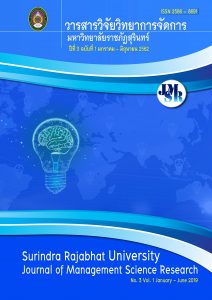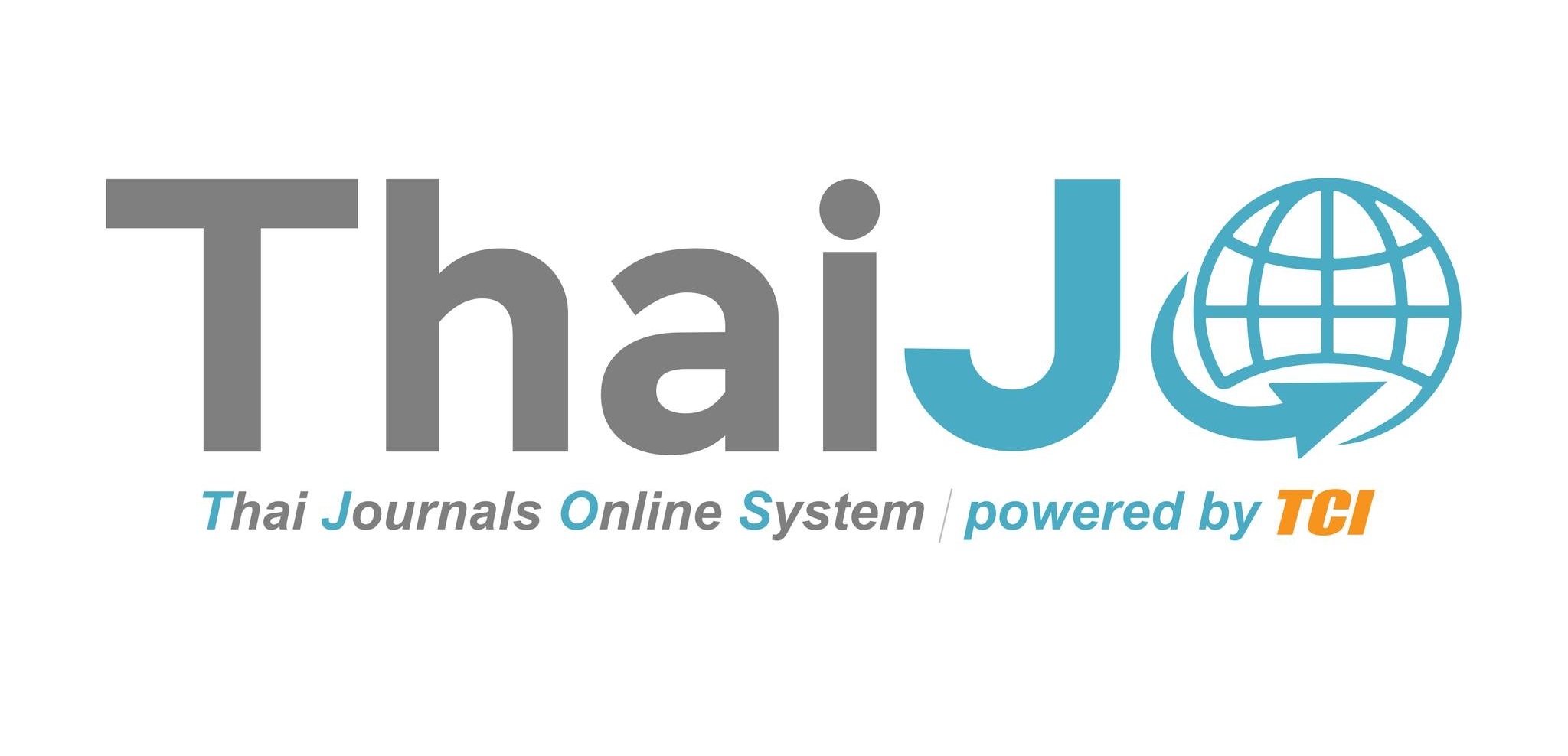Guidelines for Paarticipatory Tourism Development of Ban Mai-Dong-Samrong in Nakham Sub-District, Simueang Mai District, Ubon Ratchathani Province
Keywords:
Development Guidelines, Participatory Tourism, Ban Mai Dong Samrong’s Tourism AttractionsAbstract
The objectives of this qualitative study were: 1) to study the problems related to the tourism at Ban Mai Dong Samrong in Nakham sub-district, Si Mueang Mai district, UbonRatchathani province; and 2) to study the guidelines for participatory tourism development at Ban Mai Dong Samrong. Data were collected through observations and in-depth interviews with local philosophers, community leaders, tourists, entrepreneurs, and villagers. In addition, the development guidelines were analyzed through a focused-group discussion with 8 experts. The study revealed that: Ban Mai Dong Samrong is a community whose main occupation is farming and gardening. People are harmonious and believe in the Buddhist principles. The community’s geography is covered with mountains and forests. Therefore, there are lots of tourist attractions generated from such the physical features including Phu An Ma, the Ancient Wagon Tracks (the transportation routes in the past), and BokeLueg Waterfall which generated from the integrity of nature. At the same time, Ban Mai Dong Samrong Community has experienced problems in tourism management (e.g. the deforestation, the use of agricultural chemicals, wastes, intoxication sale, continuous tourism promotion, and etc.) that lead to the deterioration of the tourist attractions. In addition, there are also problems of connection between government agencies, entrepreneurs, and people or tourists. As a result, it is necessary to develop integrated tourism among 3 agencies in order to achieve sustainable participatory development. Guidelines for participatory tourism development at Ban Mai Dong Samrong in Nakham sub-district in Si Mueang Mai District, UbonRatchathani province should be proceeded as follows.1) The community is the owner by creating awareness of the tourist attractions’ importance and awareness of the ownership. At the same time, the transfer of historical knowledge is important for the next generation to cherish and to conserve natural resources and the environment. 2) Villagers are involved in determining directions and making decisions. The historical sites should be preserved and linked to agriculture in the area by allowing people to participate in the management and supervision of tourist sites. 3) Self-esteem should be promoted together with the preservation of cultural lifestyles and the organizing of activities to demonstrate the cultural identity of the community. This is to make people pride in their own identity and take into account the uniqueness of the local environment and culture. 4) The quality of life should be raised by promoting concrete tourism through government agencies’ public relations. This can be achieved by arranging annual tourism festivals in order to distribute income and improve the quality of life of people. 5) Environment sustainability should be created by establishing a cooperation among communities, private organizations, and government organizations (e.g. reforestation, water barrier establishment, waste disposal campaign). 6) Learning between people with different culture should be created. The study of changes by taking notes and the application of management knowledge and respect to different cultures and human dignity. The management of participatory tourism is necessary to adhere to different cultures and to respect the culture and human dignity and understanding of that culture. 7) Participation and fair return to local people. Activities should be organized concretely and developed continuously in order to publicly promote as a tourist attraction at the provincial level (e.g. organized as an annual tourism festival). 8) Distributing income to the public benefit of the community. Arranging activities that are beneficial and create a fair participation. The tourism sites should have been developed to keep up with technological changes. Further, the tourist attractions, shops, cleanliness, and utility services (e.g. toilets, trash etc.) should beorganize for tidiness.
References
กรรณิการ์ ชมดี. (2524). การมีส่วนร่วมของประชาชนที่มีผลต่อการพัฒนาเศรษฐกิจ: ศึกษาเฉพาะกรณีโครงสร้างสารภี ตำบลท่าช้าง อำเภอวารินชาราบ จังหวัดอุบลราชธานี. วิทยานิพนธ์สังคมสงเคราะห์ศาสตรมหาบัณฑิต สาขาการบริหารสังคม, บัณฑิตวิทยาลัยมหาวิทยาลัยธรรมศาสตร์.
กนิษฐา อุ่ยถาวรและคณะ. (2555). การจัดการการท่องเที่ยวเชิงนิเวศโดยการมีส่วนร่วมของชุมชนบริเวณ อุทยานแห่งชาติทุ่งแสลงหลวง สาขาหนองแม่นา จังหวัดเพชรบูรณ์. เชียงใหม่ :สำนักงานกองทุน สนับสนุนการวิจัย สำนักงานภาค.
ชูสิทธิ์ ชูชาติ. (2553). อุตสาหกรรมท่องเที่ยว. โปรแกรมอุตสาหกรรมการท่องเที่ยว. สถาบันราชภัฎเชียงใหม่.
ทิพวรรณ พุ่มมณี. (2550). อุตสาหกรรมการท่องเที่ยว. (พิมพ์ครั้งที่ 4). สำนักพิมพ์มหาวิทยาลัยรามคำแหง.
ไพรัตน์ เตชะรินทร์. (2527). ส่วนร่วมของประชาชนในการพัฒนา. กรุงเทพมหานคร : ศูนย์การศึกษานโยบาย สาธารณสุข มหาวิทยาลัยมหิดล.
ไพลินพันธ์ สร้อยจาตุรงค์. (2555). กลยุทธ์การส่งเสริมการท่องเที่ยวทางธรรมชาติแนวอนุรักษ์ อุทยานแห่งชาติดอยอินทนนท์ โดยใช้คู่มือการแนะนำเชิงนิเวศ. : กรณีศึกษา นักศึกษา
เสรี เวชบุษกร. (2538). สวนนันทนาการและสื่อความหมาย สำนักอุทยานแห่งชาติกรมอุทยานแหงชาติสัตว์ป่า และพันธุ์พืช, สืบค้นเมื่อ 20 สิงหาคม 2559, จาก http://www.dnp.go.th/npo/html/Tour/
Eco_Tour.html.
สิศึก ฤทธิ์เนติกุลและคณะ. (2555). การท่องเที่ยวเชิงนิเวศกับการอยู่รอดของชุมชนชาวม้ง บ้านดอยปุย. อุทยาน แห่งชาติดอยสุเทพ-ปุย จังหวัดเชียงใหม่. เชียงใหม่.
อุดรวงษ์ทับทิมและคณะ. (2552). ชุมชนกับการท่องเที่ยวเชิงนิเวศและวัฒนธรรมชุมชนตำบลแม่ฮี้อำเภอปาย จังหวัดแม่ฮ่องสอน. เชียงใหม่ : สำนักงานกองทุนสนับสนุนการวิจัย (สำนักงานภาค).
CeballosLascurain. (1991). ความหมายของการท่องเที่ยวเชิงนิเวศ. สืบค้นเมื่อ 8 มีนาคม 2559, จาก http://www.msu.ac.th.







